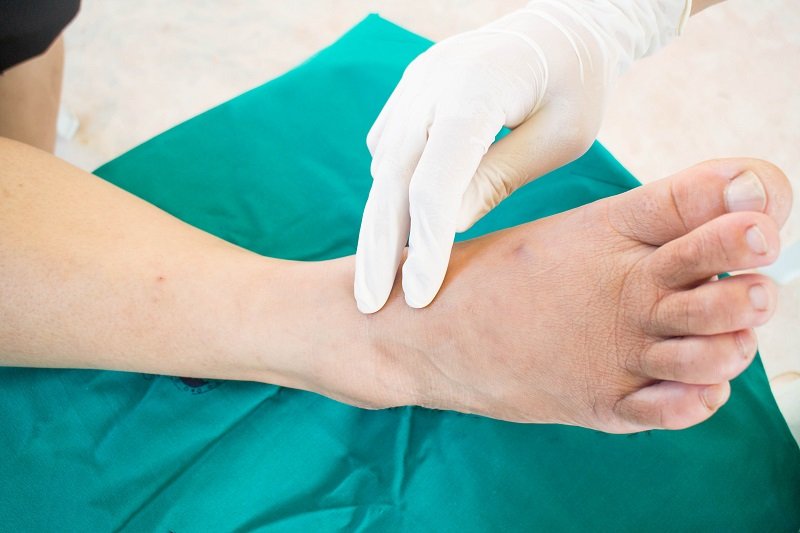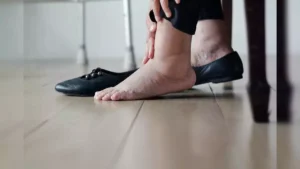Managing diabetic wounds presents a significant challenge, especially as the healing time is often prolonged due to compromised blood flow, nerve damage, and increased susceptibility to infections in diabetic individuals. With proper care and timely intervention, however, diabetic wounds can heal faster, potentially preventing severe complications like infections or amputations.
In this guide, we’ll cover essential tips and resources, including the importance of calling our wound care helpline and using specialized products like Kotszr Dressings to accelerate healing and prevent complications.
1. Understanding the Unique Challenges of Diabetic Wounds
Diabetes often leads to a range of complications that interfere with wound healing. The most common issues include:
- Peripheral Neuropathy: High blood sugar can damage nerves, leading to numbness. This may cause wounds to go unnoticed until they become severe.
- Poor Circulation: Diabetes can cause blood vessels to narrow, reducing blood flow and oxygen supply to the wound site.
- Weakened Immune Response: Diabetes can weaken immune function, making it difficult for the body to fight infections effectively.
Because of these factors, diabetic wounds require vigilant monitoring and specialized care to promote faster healing.
2. The Role of Professional Guidance in Wound Healing:
Getting timely advice from healthcare professionals is crucial for managing diabetic wounds. Many people delay seeking help until the wound becomes painful or visibly infected, which can complicate treatment.
Wound Care Helpline: It provides access to experienced professionals who can offer timely guidance on wound care best practices. They can provide insights on which treatments are most effective, answer questions about dressing changes, and advise on early warning signs of infection. Call our wound care helpline today to receive tailored advice from wound care specialists.
3. Applying the Correct Dressing for Faster Healing:
One of the most critical factors in diabetic wound care is the type of dressing used and how frequently it is changed. Proper dressings create a moist healing environment, reduce the risk of infection, and aid in faster wound closure. Here are some tips on dressing management:
- Use a Specialized Wound Care Product: Certain products, such as Kotszr Dressings, are specifically formulated for non-healing wounds. These products contain agents that help remove dead tissue, manage moisture levels, and reduce microbial load. Using Kotszr Dressings can aid in creating a protective barrier that minimizes the risk of infection and enhances tissue regeneration. Learn more about Kotszr for non-healing wounds.
- Change Dressings on Time: The frequency of dressing changes depends on the wound’s condition and the type of dressing used. Generally, keeping the wound clean and changing the dressing daily or as healthcare professionals recommend can help avoid bacterial buildup.
- Ensure Moist Wound Healing: Keeping the wound slightly moist (not wet) can promote faster healing by encouraging new tissue growth and minimizing scabbing.
- Avoid Harsh Chemicals: Avoid using hydrogen peroxide or iodine directly on diabetic wounds, as these can damage healthy tissue. Instead, use wound-specific antiseptics that are gentler and safer for healing.
4. Keep Blood Sugar Levels Under Control:
Managing blood glucose levels is crucial for overall health, but it’s especially important for wound healing in diabetic patients. Elevated blood sugar can impair the body’s ability to produce collagen and new skin cells, slowing down the healing process.
Some tips for maintaining optimal blood sugar levels include:
- Regular Blood Glucose Monitoring: Track blood sugar levels frequently to understand patterns and make timely adjustments.
- Balanced Diet: Focus on a balanced diet rich in fiber, lean proteins, and healthy fats to prevent spikes in blood sugar.
- Exercise Moderately: Engaging in regular, moderate exercise can improve blood circulation and help stabilize blood sugar levels.
5. Prevent and Manage Infections:
Diabetic wounds are highly susceptible to infections, which can severely delay healing. Early detection and prevention are key to managing wound infections.
- Monitor for Signs of Infection: Keep an eye out for redness, swelling, unusual odor, or increased warmth around the wound. If any of these signs appear, it may be necessary to seek professional help.
- Antibiotics as Needed: In cases of infection, antibiotics may be required. Consult with your doctor to determine the best treatment options.
- Regular Cleansing: Clean the wound with saline solution or as directed by healthcare providers. Avoid scrubbing the wound too harshly, as this can cause further tissue damage.
6. Emphasize Proper Foot Care:
Most diabetic wounds occur on the feet, where poor blood flow and neuropathy increase the risk of ulcers and sores. Maintaining good foot hygiene and taking precautions can prevent the development of new wounds and help existing wounds heal faster.
- Daily Foot Checks: Examine feet daily to catch any cuts, blisters, or signs of infection. Use a mirror or ask for assistance if necessary.
- Wear Proper Footwear: Invest in diabetic-friendly shoes that fit well and offer ample cushioning to reduce pressure on vulnerable areas.
- Trim Nails Carefully: Keep toenails trimmed to prevent accidental cuts and reduce the risk of ingrown toenails.
- Moisturize Regularly: Dry skin is prone to cracking, which can lead to wounds. Use a diabetic-friendly moisturizer to keep the skin on the feet soft and supple.
7. Maintain Adequate Nutrition and Hydration:
Good nutrition plays a significant role in wound healing. A diet rich in vitamins, minerals, and protein can support the body’s ability to repair itself more effectively.
Increase Protein Intake: Protein is essential for tissue repair and new cell formation. Include sources like lean meats, beans, and dairy products in your diet.
Consume Vitamin-Rich Foods: Vitamins A, C, and E are particularly beneficial for wound healing as they support collagen formation and tissue repair.
Stay Hydrated: Dehydration can impair the body’s healing processes, so make sure to drink plenty of water throughout the day.
8. Improve Blood Flow and Circulation:
Adequate blood flow is essential for delivering oxygen and nutrients to the wound site. People with diabetes often have poor circulation, which can slow down healing. Here are a few ways to improve circulation:
- Elevate Limbs When Resting: Raising the legs or affected limb can encourage better blood flow, which is particularly helpful if the wound is on the foot.
- Regular, Gentle Exercise: Light activities like walking, swimming, or stretching can promote blood flow without putting excessive strain on the body.
- Avoid Smoking: Smoking restricts blood flow and can significantly impair wound healing. Avoiding smoking is one of the best steps you can take to improve circulation and overall health.
9. Consider Advanced Wound Care Treatments:
In some cases, traditional wound care methods may not be enough for diabetic wounds, especially those that are deep or infected. Advanced wound care treatments can accelerate healing and minimize complications. These treatments should always be administered by healthcare professionals.
- Hyperbaric Oxygen Therapy: This therapy involves breathing pure oxygen in a pressurized environment, which can help increase the amount of oxygen delivered to the wound site.
- Negative Pressure Wound Therapy: Also known as wound vacs, this therapy uses suction to remove excess fluid and bacteria from the wound, creating an optimal healing environment.
- Skin Grafts and Bioengineered Tissues: For severe wounds, healthcare providers may use skin grafts or specialized tissues to cover and protect the wound, promoting faster tissue regeneration.
10. Seek Regular Medical Follow-Ups:
Regular check-ups with a healthcare provider are essential for monitoring diabetic wounds and ensuring they’re healing as expected. Routine appointments allow healthcare providers to assess the wound’s condition, provide additional treatments if necessary, and make adjustments to the care plan.
Healthcare professionals may perform tests to assess blood flow to the affected area, check for infection, and recommend appropriate wound care products or treatments. Following their advice diligently can make a significant difference in healing outcomes.
11. Psychological Support and Self-Care:
Caring for a diabetic wound can be physically and emotionally draining. Diabetic patients often experience stress, anxiety, or even depression as they cope with the challenges of managing wounds and chronic illness. Psychological support, such as talking to friends, family, or support groups, can provide motivation and relief during the healing process.
Self-Care Practices to Foster Positive Healing: Meditation, mindfulness, and gentle exercise can reduce stress and positively impact wound healing. Taking breaks, getting adequate rest, and focusing on the small progress made each day can be empowering.
Final Thoughts: Take Proactive Steps Toward Faster Healing
Diabetic wound healing requires a multifaceted approach. With the right wound care practices, including calling for professional guidance through our wound care helpline and using products like Kotszr dressings to manage non-healing wounds, you can take active steps to ensure that wounds heal faster and without complications.
If you or a loved one is managing a diabetic wound, remember that timely care is essential. The faster you address the wound, the more likely it is to heal without leading to severe complications. With proactive measures, ongoing monitoring, and professional support, diabetic wounds can be managed effectively, leading to better health outcomes and a reduced risk of serious health issues.





